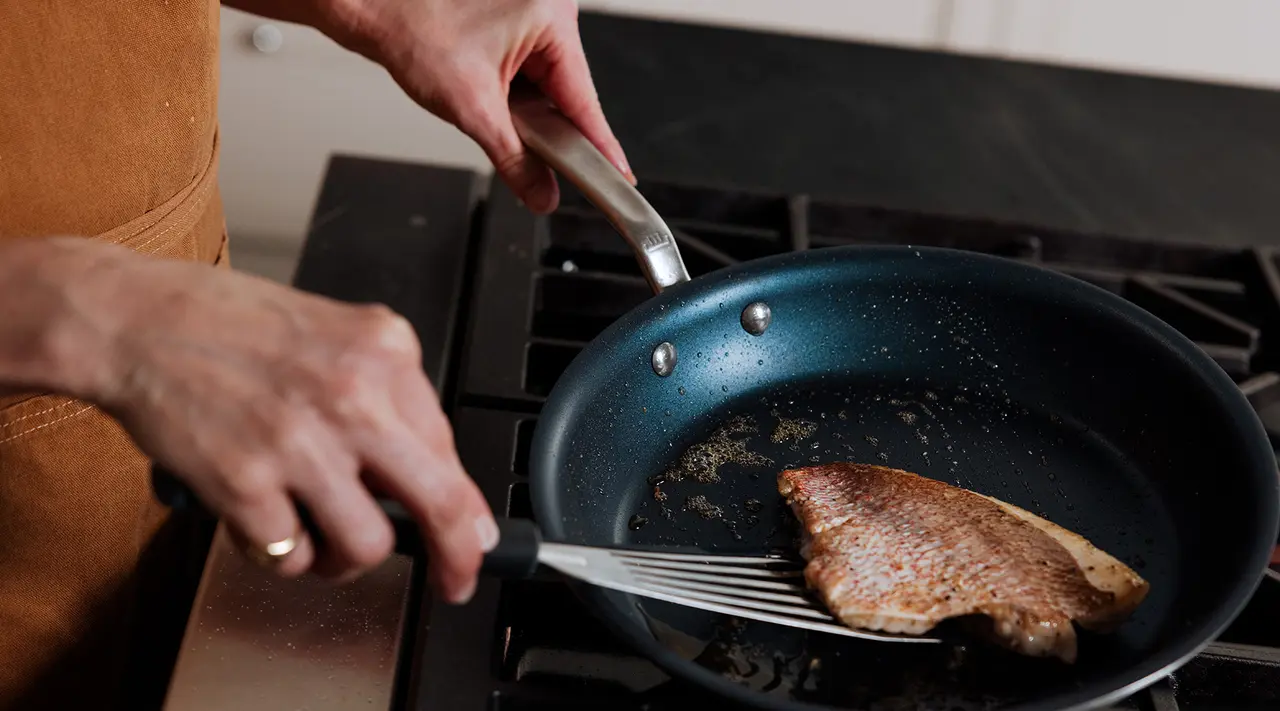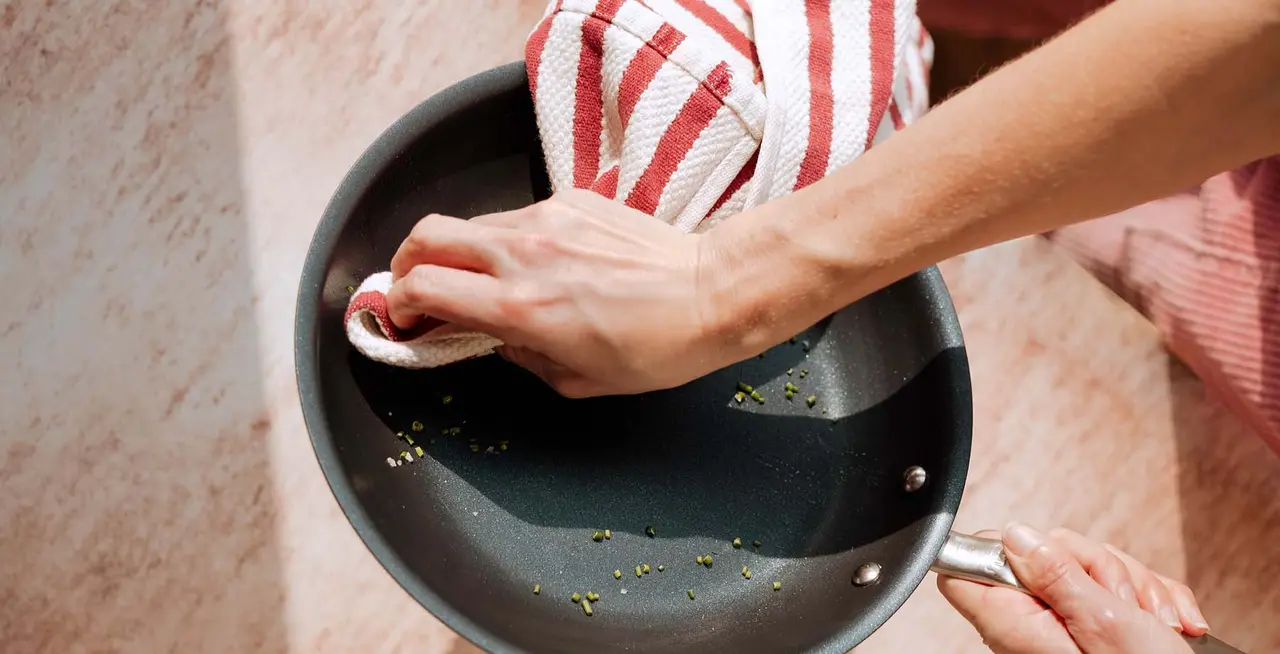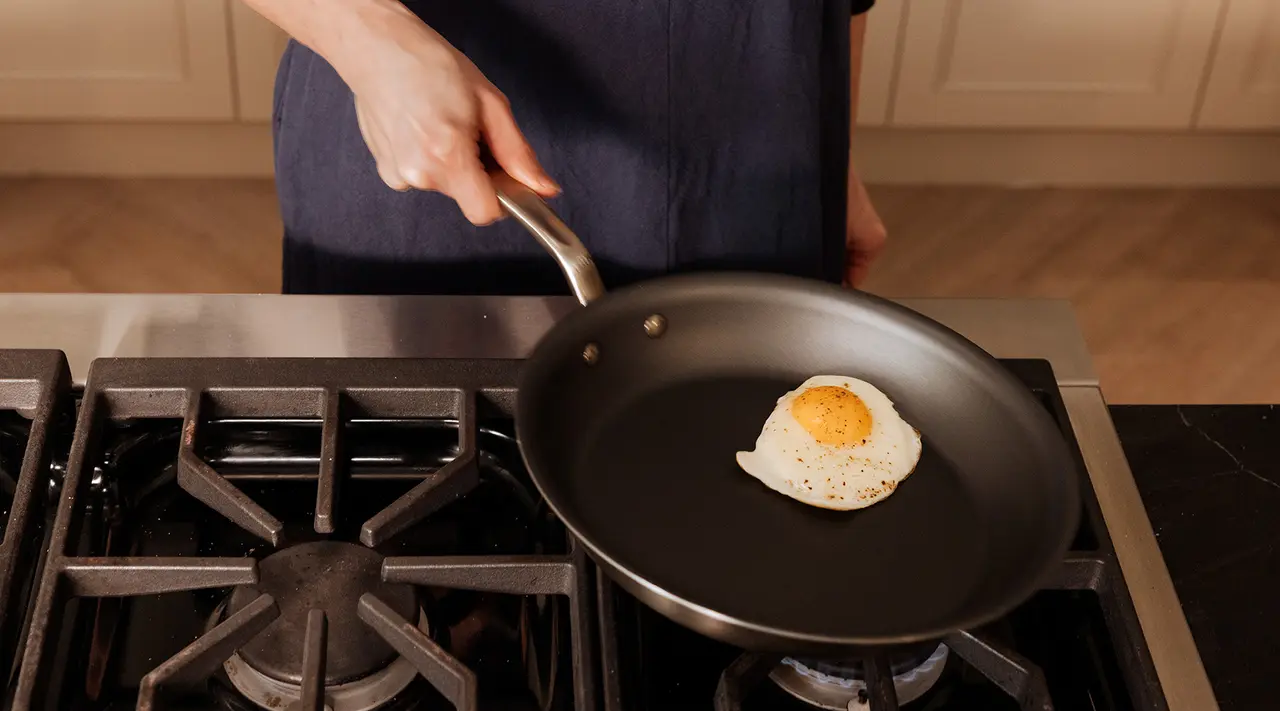Non stick pans make cooking just as easy and unfussy as the name might imply: you can use them to cook scrambled eggs, pancakes, or grilled cheese, and you’ll likely have nary a speck of burnt cheese or batter to scrape up in the end.
While non stick pans might look pretty much the same from manufacturer to manufacturer, we definitely see a difference between cheap, flimsy non stick options and sturdily constructed ones. Here’s how to find one that’ll last.
Understanding Non Stick Pans

Non stick won’t get you the hardest sear on your steak or the crispiest crust on your fried chicken—but that’s not why we use it. Rather, we love non stick because of the convenience—it keeps eggs, pancakes, and other delicate, sticky items from gluing themselves to the pan, which would leave you with cumbersome cleanup and a potentially ruined surface. Instead, non stick pans promise fast cooking and equally efficient cleanup after the fact.
Of course, you can still get a solid sear on your food with a non stick pan, especially if it’s made from a high-quality cladded base.
Factors to Consider When Choosing the Best Non Stick Pans
Non stick cookware has a—rather unfair—reputation for being cheap and replaceable. Like with most cookware, however, you get what you pay for. Here’s how to determine whether you’re getting a high-quality pan or not.
Coating Material
For the most part, PTFE-based coatings are the default when it comes to non stick cookware, but they’re not the only option. Folks looking for a non-PTFE-based coating have a handful of alternatives to choose from, such as ceramic, carbon steel, and cast iron. While these are not the exact same experience as with traditional coated non stick, they’re similar enough that for those who want no chemicals in their coats, they get the job done.
Durability
Since they feature a coating, non stick cookware will typically scratch and chip more easily than other, more durable options sans coating—even more so if they’re not used or maintained properly.
Because cheaper pans are often made with a thinner, uncladded base, they also tend to warp more easily. A 5-ply stainless clad base is ideal, both for durability and heat circulation (which we’ll go over next).
Precision Heat Distribution
If you want a non stick pan with good heat conductivity and retention, a stainless clad base is essential. In our 5-ply Stainless Clad base, we stack layers of 18/10 stainless steel with aluminum and ferritic 430 (another type of stainless steel), which helps to circulate heat evenly across the surface of the pan.
On the other side of the coin, pans made from only aluminum might be cheaper, but they typically feature more hot and cold spots and are more likely to warp.
Safety Standards
One of the most important things to look out for when shopping for non stick is whether or not it’s free of PFOA, a type of PFAS that has been linked to liver and kidney cancer, high cholesterol, and other chronic health issues. When you’re shopping for your non stick pot or pan, check the country of origin—while the U.S. has an active ban on the use of PFOA in cookware, not all countries do.
The Best Non Stick Pan Options

As we mentioned above, you’ve got a few options for non stick cookware. Here are some we recommend.
Traditional Coated
Smooth, slippery, and an absolute cinch to clean up afterward, traditional coated non stick has long been the default option for non stick cookware. These pans are made by coating a metallic base (typically aluminum and/or stainless steel) with layers of coating, which then repels substances like water and oil. Because of this near-frictionless cooking surface, you won’t need a lot of oil or butter to prevent sticking.
Ceramic
A fairly recent innovation, ceramic non stick cookware is a solid alternative to traditional non stick pans. These pieces are made by layering a silicon oxide—aka silica—based coating on top of a metallic base, creating a glossy, ceramic-like finish (hence the name). They’re touted as a healthier and more environmentally sustainable option to traditional coated non stick pots and pans.
Other Options
Aside from these two options, you can also find options like titanium-based non stick and diamond-infused ceramic, the latter of which is intended to provide a harder, more scratch-resistant surface. Of course, there’s also good old fashioned cast iron and carbon steel— while these typically need to be seasoned, they’re an excellent “naturally non stick” alternative that are both virtually indestructible and will last a lifetime with proper care.
How to Care for Your Non Stick Pan

No matter how much you’ve invested in your cookware, you can easily ruin or damage a non stick pan by failing to maintain it properly. First: always make sure to gently hand wash your pan using a gentle dish soap and non-abrasive sponge. For stubborn messes, check out our dedicated guide to cleaning non stick cookware.
Second, avoid using metallic tools or utensils when cooking with non stick. Similar to using an overly rough sponge to clean your pan, a metal spatula or spoon can leave permanent scratches in the coating. You can also protect the coating by carefully storing your pans—either by stacking them with dish towels or trivets in between each layer, or by hanging them on a pot rack.
Last but not least, try to stick to low or medium heat when cooking with non stick, and avoid putting it in the oven for long periods of time. Even if you don’t immediately notice the damage, Teflon- or ceramic-based coatings start to break down when exposed to high heat, gradually degrading their non stick properties (and, in the case of Teflon, producing toxic fumes).
Ready to Shop?
Non stick pans can instantly make your cooking routine easier, quicker, and more fuss-free—even more so if you choose one that’s high quality. With a 5-Ply Stainless Clad base and multiple layers of professional-grade non stick, our non stick pans take out even more of the guesswork.
































